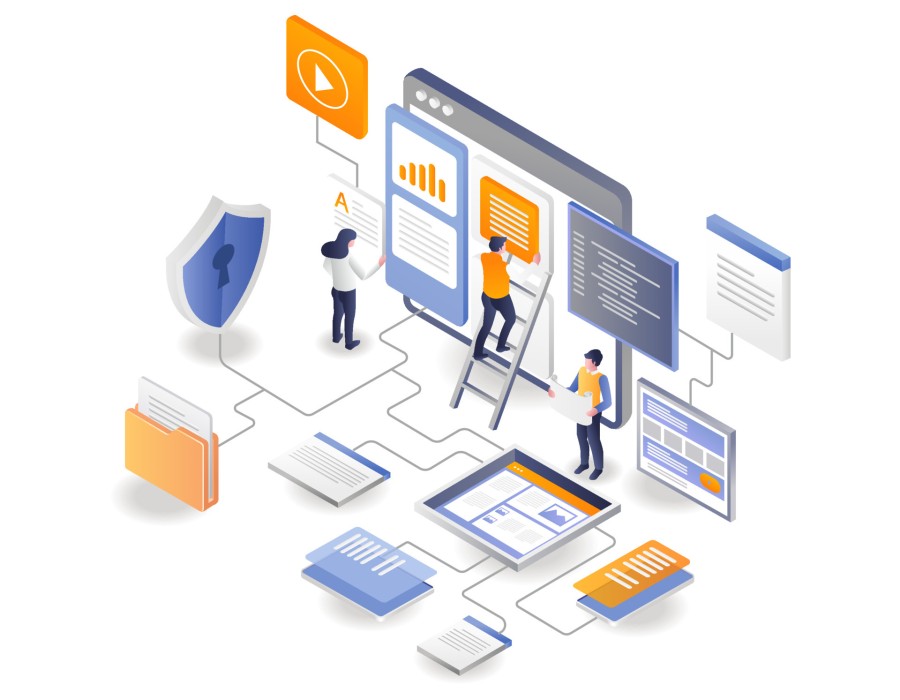In today's digital age, mobile applications have become essential tools for businesses looking to connect with customers, streamline operations, and drive growth. However, navigating the app development process can be complex and challenging, especially for those new to the world of mobile technology. In this article, we'll explore the journey from concept to reality when it comes to app development for business and provide insights to help you navigate this process effectively.
1. Define Your Objectives and Audience
Before diving into app development, it's essential to clearly define your objectives and identify your target audience. Ask yourself what problem your app will solve for your customers and how it will add value to their lives. Understanding your audience's needs, preferences, and pain points will help you design an app that resonates with them and drives engagement.
2. Conduct Market Research
Once you have a clear understanding of your objectives and audience, conduct thorough market research to assess the competitive landscape and identify opportunities for differentiation. Analyze existing apps in your niche, identify gaps or areas for improvement, and gather insights into consumer preferences and trends. This research will inform your app's features, design, and overall strategy, helping you create a compelling offering that stands out in the market.
3. Create a Detailed Plan
With your objectives and market research in mind, create a detailed plan outlining the scope, timeline, and budget for your app development project. Define the features and functionality you want to include in your app, prioritize them based on importance and feasibility, and outline a roadmap for development. Consider factors such as platform (iOS, Android, or both), technology stack, user experience design, and monetization strategy as you plan your app's development journey.
4. Find the Right Development Partner
Choosing the right development partner is crucial to the success of your app. Look for a reputable app development company or team with experience building apps in your industry and a track record of delivering high-quality results. Evaluate their portfolio, client testimonials, and expertise in relevant technologies to ensure they're the right fit for your project. Collaborate closely with your development partner throughout the process, providing clear communication and feedback to ensure your vision is realized.
5. Design and Development
Once you've found the right development partner, it's time to bring your app to life. Work closely with your design and development team to translate your ideas into a functional app prototype. Focus on creating an intuitive user experience, engaging visual design, and seamless navigation to ensure your app is user-friendly and enjoyable to use. Be prepared for multiple iterations and feedback sessions as you refine your app's design and features based on user testing and feedback.
6. Testing and Quality Assurance
Before launching your app to the public, it's essential to conduct rigorous testing and quality assurance to identify and address any bugs or issues. Test your app on different devices, operating systems, and network conditions to ensure compatibility and performance across a variety of scenarios. Utilize automated testing tools and manual testing procedures to validate your app's functionality, security, and reliability, ensuring a smooth and seamless user experience upon launch.
7. Launch and Marketing
Once your app is polished and ready for release, it's time to launch it to the world. Develop a comprehensive marketing strategy to generate buzz and drive downloads, leveraging channels such as social media, email marketing, app store optimization (ASO), and paid advertising. Monitor user feedback and analytics closely post-launch, iterating on your app based on user insights and continually optimizing your marketing efforts to maximize engagement and retention.
8. Maintenance and Updates
App development is an ongoing process, and it's essential to continue supporting and improving your app even after launch. Regularly monitor user feedback and analytics to identify areas for improvement and prioritize updates accordingly. Stay up-to-date with technological advancements and industry trends, incorporating new features and functionality to keep your app fresh and competitive in the ever-evolving app market.
Conclusion
Navigating the app development process for business can be challenging, but with careful planning, collaboration, and execution, you can turn your concept into a reality and create a successful app that drives business growth and delivers value to your customers. By defining your objectives, conducting market research, finding the right development partner, designing and developing your app, testing and quality assurance, launching and marketing, and maintaining and updating your app, you can navigate the app development journey with confidence and achieve your goals in the competitive world of mobile technology.





Comments